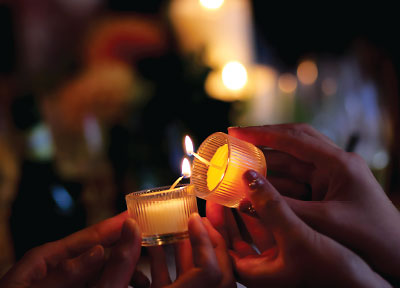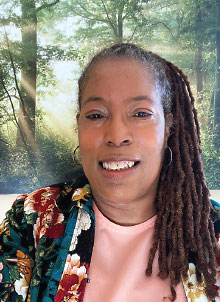Faith Communities Are Potent Resource for Creating Connection and ‘Mattering’
Abstract
The Black church is one of the most important resources in the community for counteracting risk factors for mental illness and suicide and bolstering protective factors among Black youth at risk for suicide.

Communities of faith can promote resilience and the experience of belonging and being celebrated within a community, crucial to buffering against the risk of suicide, said Sherry Davis Molock, Ph.D., M.Div., a professor in the Department of Psychological Brain Sciences at George Washington University.
During the virtual 2020 fall conference “Suicide: Culture & Community,” sponsored by the Erikson Institute for Education and Research at the Austen Riggs Center, Molock urged clinicians to leverage resources in the community for their patients, especially faith communities.
“When thinking about upstream interventions for prevention of suicide, communities of faith are a rich opportunity,” she told conference attendees. “Faith leaders and faith communities are often first responders on the front line of mental health crises. Faith communities care for the whole person and their families and provide a venue for interaction with people in diverse settings.”
Moreover, Molock said, “mental health crises are often also crises of faith, when people are struggling with a sense of abandonment by a deity.”

“Clinicians can connect patients to community resources, including faith communities, grassroots advocacy groups, and youth groups such as scouting and boys and girls clubs,” says Sherry Davis Molock, Ph.D., M.Div.
She also said she believes some of the attitudes and beliefs within the Black church that have traditionally served as barriers to seeking mental health care—such as the belief that depression or suicidality is a failure of faith—are changing. Within her own church in the District of Columbia (where she is co-pastor with her husband), Molock said she has led Bible study courses emphasizing that prominent figures in the Bible have experienced deep periods of darkness, mimicking the symptoms of depression.
“The silence is being broken, and clergy see their role as partners with other mental health professionals,” Molock said.
At the virtual conference, Molock and other clinicians and suicide researchers explored the psychosocial, cultural, and political factors that drive suicide in a range of different communities. An overriding message was that rising rates of suicide are driven not only by individual loss, shame, and guilt but also by family, community and cultural factors, and economic and political conditions.
Katie Lewis, Ph.D., research psychologist at Austen Riggs, who served as a discussant for Molock’s address, has focused her work on the momentary and day-to-day situational experiences that can influence suicide risk.
“The most important message I have taken away from this work is that contextual and relational networks matter,” Lewis said. “The day-to-day experiences and exchanges with those in our networks and communities carry a cumulative impact on our well-being and sense of fortitude in withstanding life challenges.
“We are not isolated creatures, but our lives and well-being are intertwined with those around us. Understanding this, we cannot ignore the vital importance of conceptualizing suicide prevention at the individual, family, and community levels.”
Calling for ‘Upstream Approach’
Molock especially focused her comments on youth suicide in the African American community, citing a 2019 report in Pediatrics showing that suicide attempts rose by 73% between 1991 and 2017 for Black adolescents, while injury by attempt rose by 122% for adolescent Black boys during the same period (see Psychiatric News).
She was a member of an expert work group of the Emergency Task Force on Black Youth Suicide of the Congressional Black Caucus, which emphasized the need for an “upstream approach” focusing on risks and protective factors in the community. (Also participating as expert members were past APA President Altha Stewart, M.D., psychiatrist and APA member William Lawson, M.D., and former APA Deputy Medical Director Annelle Primm, M.D. See Psychiatric News.)
Risk factors include substance use, exposure to suicidal behavior of others, being a member of a sexual minority, exposure to discrimination and trauma, and lack of residential stability. Protective factors include strong familial support/relationships; religious and spiritual engagement; community/social support; and stable family housing, income, and employment.
“What many of these protective factors have in common is promotion of a sense of connectedness and ‘mattering’—being acknowledged by others and having a sense that others are concerned about your well-being,” she said.
Molock said the Black church is one of the most potent resources in the community for counteracting risk factors for mental illness and suicide and bolstering protective factors.
“The Black church is an excellent venue for promoting positive mental health and one of the most influential institutions in the Black community,” she said. Though church membership is declining overall, across denominations, a 2009 Pew Foundation survey found the trend is not true in the African American community: 87% of African Americans are affiliated with a religious organization, and 79% of African Americans say religion is very important in their lives.
“You might feel like you don’t matter anywhere else, but you can matter in your church,” she said. “You might be a janitor in a school system and feel yourself to be disrespected, but you can be a deacon in your church, and when you are absent, people will miss you.” ■



